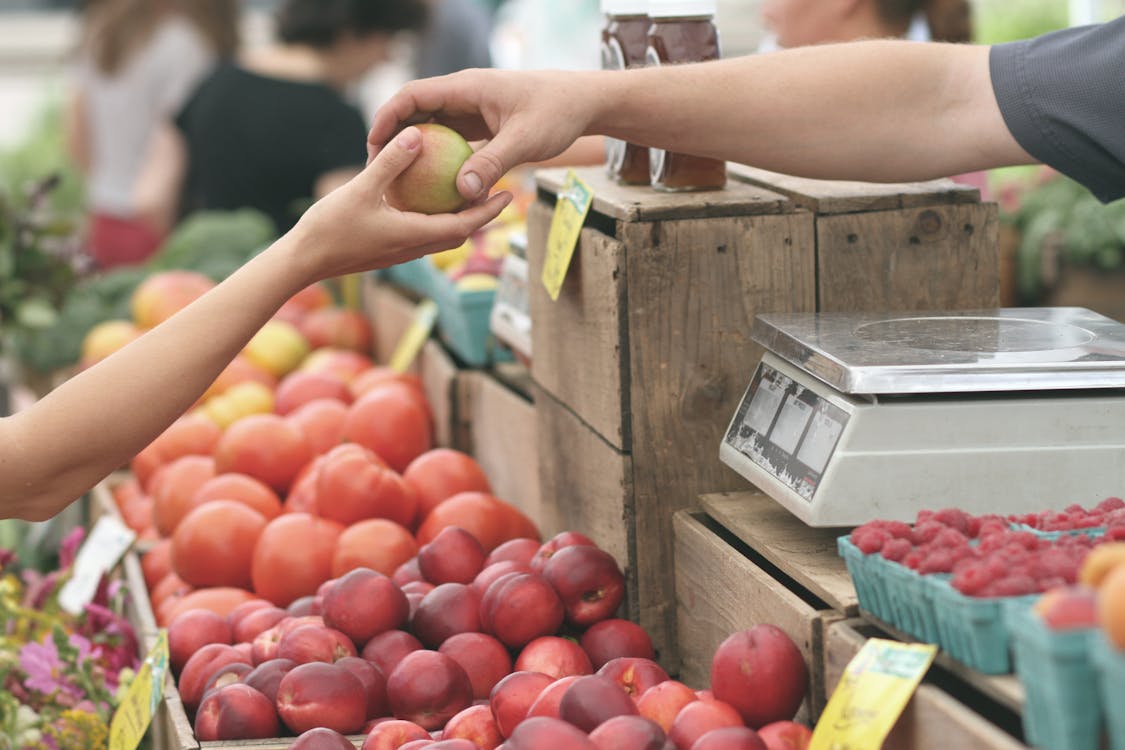- What did you do during the weekend? 주말에 뭐 했어요?
Korean Level 2, Activity 2: 그것은 얼마예요?/ How Much is It?

Description:
In this activity, students will learn how to ask how much an item is at a store. Students will also be able to ask questions about how much an item costs or how many items come in a pack at a store. Students will practice asking each other these questions.
Semantic Topics:
Money(돈), How much is(얼마예요), oranges(오렌지), bananas(바나나), tomatoes(토마토), buy(사다), kimchi(김치)
NCSSFL-ACTFL World-Readiness Standards:
- Standard 1.1: Students engage in conversations, provide and obtain information, express feelings and emotions, and exchange opinions.
- Standard 1.2 Students understand and interpret spoken and written Korean on a variety of topics.
- Standard 2.1 Students demonstrate an understanding of the relationship between the practices and perspectives of Korean cultures.
- Standard 4.2: Students demonstrate an understanding of the concept of culture through comparisons between Korean cultures and their own.
Standards for Korean Language Learning from American Association of Teachers of Korean:
- Students understand and interpret written and spoken Korean on a variety of topics.
- Students point out similarities and differences between Korean and their own cultures with regards to manners and daily routines in various situations
- Students recognize and understand Korean daily practices (e.g., removing shoes before entering homes, sitting and sleeping on the floor, bowing to elders).
Idaho State World Language Standards:
- COMM 1.1 – Interact and negotiate meaning (spoken, signed, written conversation) to share information, reactions, feelings, and opinions
- CONN 1.2 – Relate information studied in other subjects to the target language and culture.
- COMM 3.1 – Present information, concepts, and ideas to inform, explain, persuade, and narrate on a variety of topics using appropriate media in the target language
NCSSFL-ACTFL Can-Do Statements:
- I can ask “How much…” an item is at a store
- I can role play with other students to practice asking questions in a store
- I can learn names of grocery items
Materials Needed:
Warm-Up:
1. Begin by introducing the Can-Dos for today’s activity and opening up the Google Slideshow.
오늘의 학습목표를 소개하고 구글슬라이드를 여세요.
- I can ask “How much…” an item is at a store
저는 상점에 있는 물건을 “얼마예요”라고 물을 수 있습니다.
2. Students will discuss what they did over the weekend for about 5 minutes.
학생들은 주말에 무엇을 했는지 5분동안 이야기합시다.
- 1. What did you eat with your friend this weekend?
이번 주말에 친구와 무엇을 먹었습니까?
- 2. Did you hang out with your friends this weekend?
이번 주말에 친구들과 놀았습니까?
- 3. Did you do anything fun this weekend?
이번 주말에 재미있는 일을 하셨나요?
Main Activity:
1. The students will begin by reading the questions that go with the customer and cashier activity.
가게에서 손님과 직원이 서로 하는 질문을 읽어봅시다.
- How much is an orange per bag? 오렌지는 한 봉지에 얼마예요?
2. The students will ask each other about what they want to buy.
학생들은 사고 싶은 것에 대해 서로 물어보세요.
- What do you want to buy? 무엇을 사고 싶어요?
- I want to buy one carton of milk? 나는 우유를 한 개 사고 싶어요.
3. The students will also take turns asking each other questions about certain items and how much they cost.
학생들은 교대로 특정 물건과 가격에 대해 물어봅니다.
- Cashier: What are you going to buy? 점원 : 무엇을 살 거예요?
- Customer: How much are two bananas? 손님: 바나나는 두 개에 얼마예요?
- Cashier: Two bananas are 3000 won. 점원 : 바나나는 두 개에 3000원입니다.
- Customer: Thank you. 손님: 감사합니다.
Wrap-Up:
Ask the following questions to finish the lab(이 질문으로 랩을 마무리하세요):
- 1. Do you have any questions? 질문있으세요?
End of Activity:
- Read Can-Do statements once more and have students evaluate their confidence.
- (Use thumbs up/thumbs down or download our student cards.)
- Encourage students to be honest in their self-evaluation.
- Pay attention, and try to use feedback for future labs.

